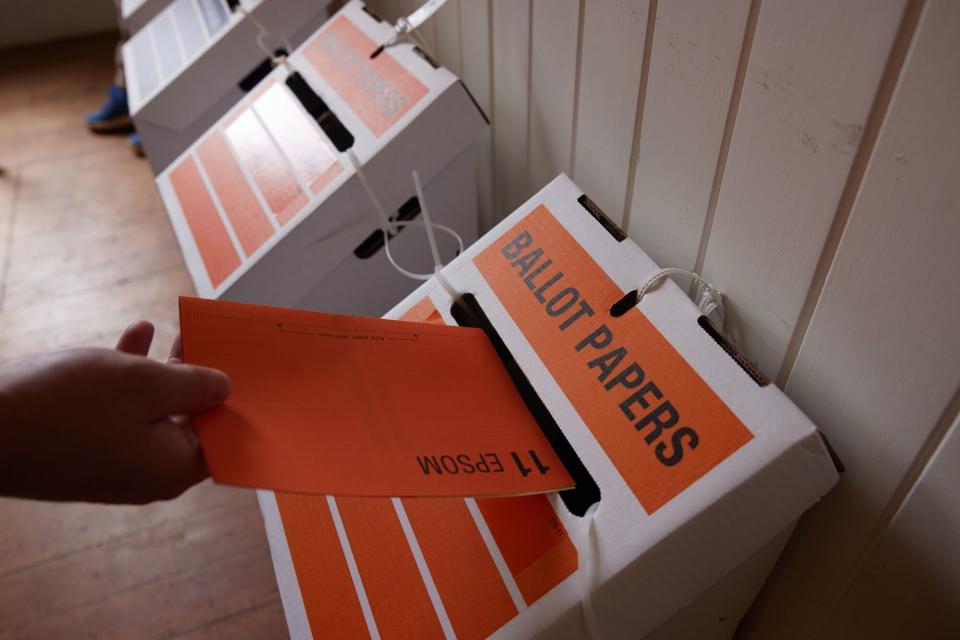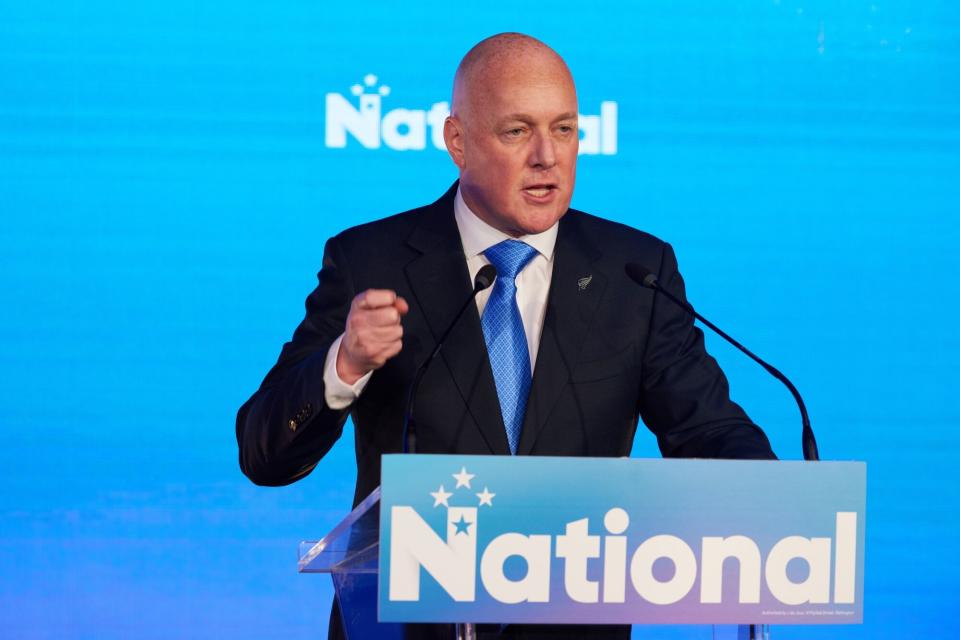New Zealand National Party Needs Two Partners to Govern
(Bloomberg) -- New Zealand’s National Party will need the support of two smaller parties to form a new government after losing two seats in final election results.
Most Read from Bloomberg
Biggest Cross-Asset Rally This Year Takes Wall Street by Storm
Iceland’s Blue Lagoon on Alert for Magma Flows After Earthquakes
Israel’s Fight With Iran Proxies in Syria Poisons Russia Ties
National won 48 seats, two fewer than the preliminary count indicated after the Oct. 14 vote, the Electoral Commission said Friday in Wellington. While National is expected to add another seat in a by-election later this month, it will still need the backing of both the ACT Party, on 11 seats, and the New Zealand First Party, with eight, to achieve a majority in the 123-seat parliament.
Incoming prime minister Christopher Luxon has been holding talks with both parties with a view to forming a center-right administration as soon as possible after the release of the official election results, which include some 603,000 special votes. The National Party leader’s preference was a coalition with ACT alone, but the prospect of their wafer-thin majority disappearing in the final count made a three-way pact with New Zealand First likely.
“We are working constructively with both parties,” Luxon told reporters after the official results were published. “We are going to come together and we are going to form strong, stable government.”
Luxon declined to comment on how long it will take to agree a governing arrangement with ACT leader David Seymour and New Zealand First leader Winston Peters, who have a history of animosity toward each other. He couldn’t guarantee talks would be concluded in time for him to attend the APEC leaders’ summit in mid-November.
It remains unclear what concessions Luxon will need to make in return for the support of the two smaller parties.
Seymour is a libertarian who has proposed deep cuts to government spending, sales of state assets, and doing away with moves to guarantee the involvement of indigenous Māori in decision making.
Peters, an anti-immigration populist and champion of the elderly, can be expected to oppose any moves to raise the age of eligibility for the state pension. He has also expressed reservations about National’s planned tax cuts, which would be partially funded by allowing sales of expensive homes to foreigners and applying a levy to the transactions.
Labour’s Demise
The Labour Party won 34 seats, unchanged from election night and marking a heavy defeat for the party that led the country through the Covid-19 pandemic.
Labour’s share of the vote slumped to 26.9% from 50% at the 2020 election, when former prime minister Jacinda Ardern stormed to the first outright majority ever achieved under the proportional representation system New Zealand adopted in 1996.
Labour’s ally the Green Party gained one seat in the final count, taking its tally to 15, while the small Māori Party got six, up from four in the preliminary results and tripling its number of parliamentarians. That still leaves the parties of the center-left well short of a majority.
New Zealand’s parliament normally has 120 seats but one will be added when a by-election is held in the Port Waikato electorate in late November. The anomaly was triggered by the death of candidate during the election campaign. Port Waikato is a safe National seat, meaning its total will likely increase to 49.
The Māori Party created an additional two-seat “overhang” by winning six electorates, more than its proportion of the overall vote entitles it to. It could face a recount in the Tāmaki Makaurau electorate after taking it from Labour by just four votes.
Special votes — those cast overseas or by people outside their home electorates — traditionally favor left-leaning parties because they include cohorts such as university students.
(Updates with PM-elect comments from fourth paragraph)
Most Read from Bloomberg Businessweek
These Five Countries Are Key Economic ‘Connectors’ in a Fragmenting World
Online Gambling Has Millions of Young Africans Battling Addiction
Shipping Startup Flexport Is in Crisis Mode Heading Into the Holiday Season
©2023 Bloomberg L.P.




